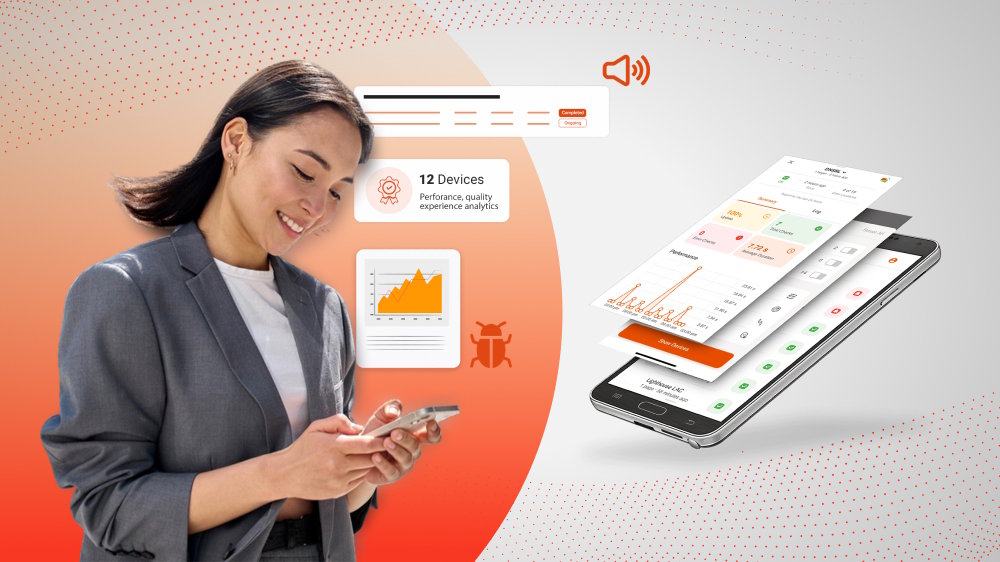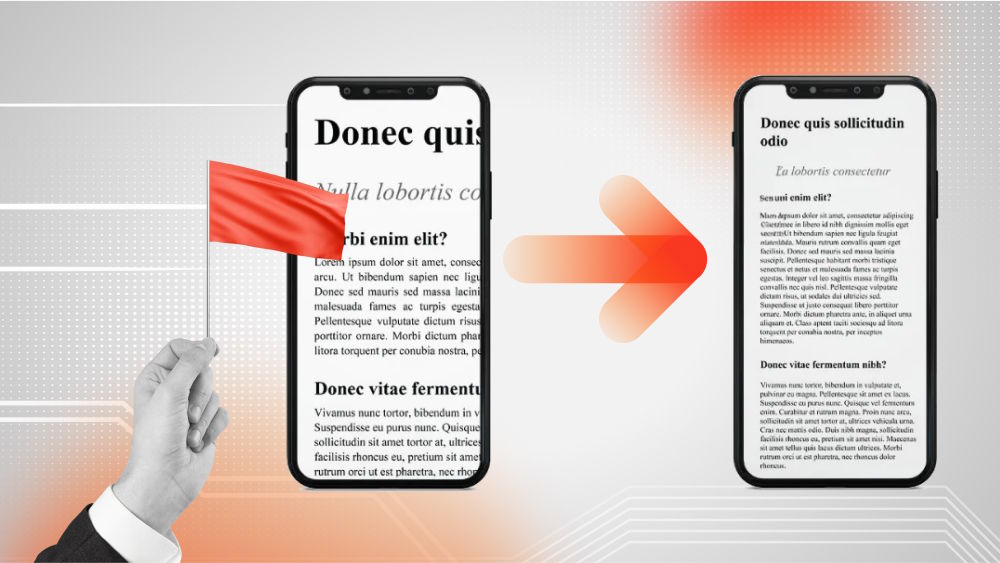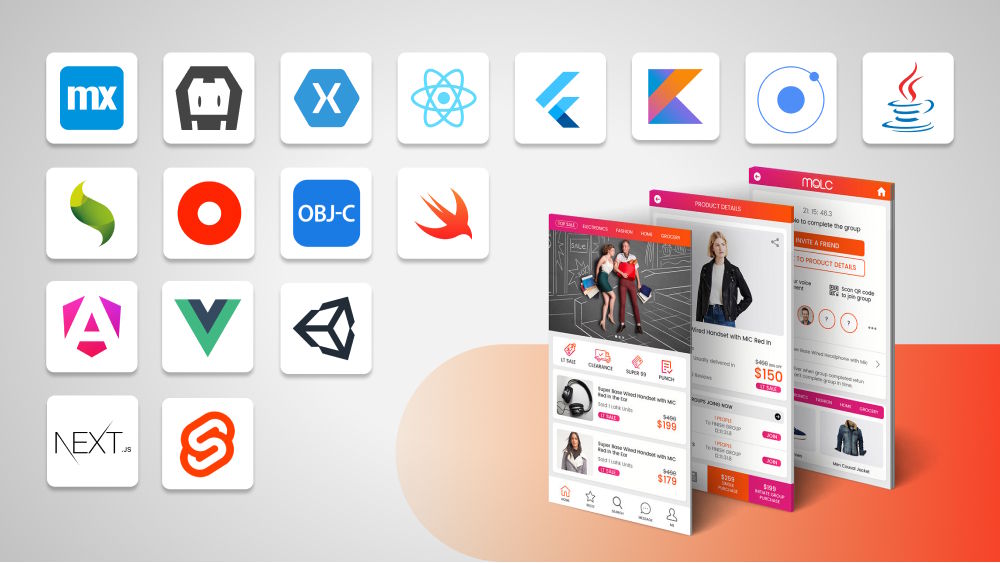The shifting dynamics of macroeconomics have compelled financial institutions to rethink their operating models. This includes wealth management providers. The days of favorable and easy growth are already behind us; therefore, it is high time for companies to rethink their strategies.
What better way to embrace the tide of digitization? The rise of technologies, namely artificial intelligence, machine learning, and blockchain, is slowly but surely disrupting all areas of our lives. To ride the wave of these changes, a wealth management app might be the answer you’re looking for. It is the perfect opportunity to utilize the power of technology while deepening the relationship with your valuable clients.
Key Takeaways:
- The digitalization wave is sweeping across the financial sector. Investors and wealth managers have high expectations for seamless digital experiences in wealth management apps.
- A wide range of individuals can use wealth management apps, especially those with substantial assets and looking to manage their finances, with help from professionals and automated services.
- A top-performing wealth management app provides easy access to essential insights and is easy to navigate.
What Is a Wealth Management App? & What Are Its Key Features?
Beyond a tool used to monitor cash flow, a wealth management app is a digital platform designed and created to help individuals and organizations manage their finances, investments, and overall wealth.
They provide real-time market insights and may integrate with users’ financial accounts and investment portfolios for a comprehensive view of financial health. Some apps also offer automated investing services, known as Robo-Advisors, for those preferring a hands-off approach. With tools for goal setting, expense management, and tax optimization, wealth management software empowers users to confidently make informed financial decisions.

These wealth management apps are available on smartphones, tablets, or desktops, typically offering tools and features to manage personal or institutional wealth based on the complex needs of users and the use cases. With these functionalities in place, wealth management apps can transform financial information and data into clear, actionable roadmaps for achieving long-term financial freedom and security.
Investment Performance Management

This is the core app functionality that allows users to track and analyze portfolio returns (TWR, IRR) across portfolios, accounts, and asset classes, benchmarks, and performance attribution for transparency and trust. In simpler terms, the feature helps users to measure how well investments are performing over time. It typically includes a suite of tools for buying, selling, and monitoring various types of investments, such as stocks, bonds, exchange-traded funds (ETFs), mutual funds, and alternative assets.
Many wealth management apps offer fully automated investment strategies (robo-advisors), while others allow for more hands-on, self-directed investing. Real-time performance data, portfolio diversification analysis, and marketing forecasting tools are often part of this feature set.
Financial Planning & Goal Visualization

At the heart of every effective wealth management solution lies a financial planning engine designed to turn abstract financial ambitions into actionable insights and strategies. This feature works as your own digital planner that enables users to define specific long-term financial objectives, map out a strategic approach, set investment goals (retirement, education funding, or property purchase), and track their financial progress. Unlike a traditional advisor, the financial planning feature offers real-time, data-driven guidance that adapts instantly as your financial situation or goals change.
Portfolio Tracking

As its name suggests, portfolio management gives users a real-time snapshot of their entire financial portfolio, consisting of performance metrics, asset allocation, and investment diversification. Through a unified view, users can monitor and analyze all their holdings. Portfolio tracking ensures that each portfolio stays aligned with the client’s objectives, risk profile, and market conditions. More advanced systems can automate rebalancing, suggest trades, and simulate “what-if” scenarios to improve decision-making and operational efficiency.
Retirement Planning

As a retirement planner, this feature helps users prepare personal capital and financial conditions for life after active employment. In simpler terms, it is about calculating how much an individual needs to save, invest, and manage to ensure their retirement readiness. Using inputs such as current savings, income, expected retirement age, life expectancy, inflation, tax impact, and projected investment returns, the tool generates personalized retirement projections and runs scenario analyses to assess different outcomes.
Risk & Compliance Assessment

One of the increasingly critical features in modern wealth management apps is risk and compliance assessment. This functionality aims to evaluate investment strategies and ensure that they align with not only the financial goals of users but also their risk tolerance and regulatory requirements. Ordinarily, upon onboarding, users typically complete a risk profiling questionnaire, which informs how conservative, moderate, or aggressive the investors are. Advanced tools go further by offering risk analysis, stress-testing tools, and simulations to see how portfolios might perform under different market conditions, such as recessions or interest rate hikes.
Budgeting & Savings Planner

Wealth management is not merely about investing but bridging every aspect of money management with long-term financial goals for the best interests. With a budgeting and saving planner in place, users can establish and maintain healthy financial habits. They can track income, categorize expenses, and allocate funds toward specific savings goals as well as visualize their progress and adjust their spending in real time.
Personalized Investment Recommendation

The key to modern wealth management lies within personalization. Today’s apps are leveraging advanced algorithms - empowered by artificial intelligence (AI) and machine learning (ML) - along with data analytics to comprehend users’ spending patterns and provide personalized investment recommendations.
Based on a user’s financial profile, the wealth management application suggests an optimal mix of assets, including a diversified portfolio of ETFs, mutual funds, individual stocks, and, in some cases, alternative investments such as real estate, cryptocurrencies, or private equity. This personalized approach makes investing more accessible and data-driven while helping users to tailor strategies to their unique goals and risk profiles.
Financial Education & Investment Insights

Like a built-in info hub, this feature is designed to empower users with financial literacy and investment confidence. It provides access to educational resources that include a variety of content forms (E.g., expert articles, videos, webinars, and interactive learning modules) and cover key topics (E.g., budgeting, portfolio diversification, risk management, and market trends).
Who Uses Wealth Management Applications?
Wealth management apps are useful tools for anyone seeking to track investments, simplify financial investments, and receive personalized financial advice. These individuals might be:

- High-Net-Worth Individuals (HNWIs): Affluent individuals with sizeable assets often need help tracking investments, managing complicated portfolios, and optimizing tax strategies.
- Young Professionals: Younger generations, those who are accumulating wealth, often prefer digital tools to manage their investment tools and acquire real-time insights.
- DIY Investors: Those who prefer to manage their own finances often seek high-performing apps to meet their financial management needs.
- Busy Individuals: People with a hectic schedule who want to take financial management off their plates.
- Retirees or Pre-Retirees: Individuals who are nearing retirement may need the app to track savings, manage estate planning, and more.
- Small Business Owners: With multiple tasks to handle at once, small business owners might need wealth management apps to meet their financial goals.
Wealth Management Apps - Why Mobile Matters?
A report showed that the market size for wealth management platforms worldwide was estimated at USD 2.95 billion in 2023. According to financial projections, the market would sharply rise at a CAGR rate of 12.5% from USD 3.31 billion in 2024 to USD 8.50 billion by 2032.
The growing popularity of wealth management apps can be attributed to a number of factors, including the growing reliance on digital devices, the demand for improved client service, and the need for more engaging digital experiences.

Growing Reliance on Digital Devices
A study by J.D.Power found that Millennials and Gen Z have a strong inclination towards digital communication. To be specific, digital means are their main communication channel for advice (56%), planning (59%), and service (74%). The older generations, like Boomers and Gen X, still prefer direct interaction with financial advisors for planning and consultation.
Increasing expectations in wealth management solutions come with the growing reliance on mobile devices. A 2016 study by McKinsey has pointed out the following significant facts:
- The study mentioned robo-advisors Betterment, Wealthfront, and Future Advisor as “digital attackers,” meaning companies with a digital-first approach in the finance world. Even though affluent individuals were slow to adopt digital advice, those who did were 5 to 10 times happier.
- This can be attributed to the “digital attackers” customer-centric approach.
- The study admitted that web and mobile experiences were crucial, as customers were also more aware of the digital wave.
Overall, the writing on the digital wall is clear: Holistic wealth management is here to stay. Enterprise Apps Today predicts that wealthtech will capture a formidable 30% of the market by 2025, showcasing a dramatic shift towards digitalized solutions that offer a comprehensive, one-stop shop for all financial needs.
Demand for Improved Client Service
As we’ve mentioned earlier, those who experience digital services for wealth management are generally happier. Wealth management apps play a major role in facilitating the relationship between clients and wealth management firms. For example, every time a client has requests or questions, they can simply message their financial advisor. Gone are the days of waiting in offices or on calls for simple answers.
The McKinsey Affluent and High-Net-Worth Consumer Insights Survey also showed that monthly communication with clients, instead of once or twice a year, has increased customer satisfaction scores by 52 percent.
Need For More Engaging Digital Experiences
Despite the rise of digitization after the pandemic, clients have reported dissatisfaction with their personalized wealth management experiences. Over 60% of high-net-worth individuals reported frustrating experiences when trying to access details about new wealth management products or market updates.
A well-designed app will not only keep your customers happy but also your wealth advisors satisfied. Powerful, user-friendly wealth management apps are game changers for financial professionals, enabling them to serve clients better and assist them in achieving financial success.
What Factors Constitute a Successful Wealth Management App?
Being aware that there is a strong need for a wealth management app is the start. However, to truly succeed in building one, you also need to understand the must-have elements that create successful wealth management software.

User-friendly
A highly-rated app is a user-friendly app. Users shouldn’t stop in their tracks and wonder what to do next with the app. Tools for financial management and real-time insights should be easily accessible. Complex apps require a sharp learning curve and have a hard time keeping users engaged.
Automated Portfolio and Investment Management
Top-tier wealth management is a comprehensive endeavor of both investment returns and planning. Retirement planning, college savings, and insurance needs must also be taken into account. Other services like financial planning, one-on-one sessions with financial advisors, and even financial planning software should also be included. All these tools form a well-rounded approach to wealth management that meets the various needs of today’s investors.
Another crucial aspect of the wealth management app is the use of AI. Accenture has surveyed to truly understand the impact AI has on the wealth management industry. The numbers speak for themselves:
- An overwhelming 83% of financial advisors are convinced that AI will significantly impact the client-advisor relationship, with more than half of them forecasting a transformative or revolutionary future for financial advisory.
- AI’s potential to grow financial advisors’ businesses organically is crystal clear, as 9 out of 10 advisors believe it can generate a business growth of over 20%
However, 50% of the participants also admitted they were under pressure to implement their AI vision.
Security of Accounts and Data
Financial apps contain extremely sensitive information about their clients. Hence, robust security measures should be a top priority. This includes two-factor authentication, data encryption, access control, and data privacy policies.
Low Fees and Costs
Determining appropriate wealth management fees allows investors to retain more of their portfolio returns over time. Fees can be assessed through various factors:
- Fee structures, e.g., asset-based fees, flat fees
- Management expense ratio for investment accounts
- Account minimums
- Trading commissions
Understanding these factors ensures that these fees don’t eat away at returns while still providing valuable services to investors.
Top 3 Wealth Management Apps That Ease the Financial Life

Betterment
Betterment is an American financial advisory firm that offers services for cash management, retirement planning, and digital investments. Betterment is a platform that allows users to set financial goals, such as emergency fund building, long-term investment, or retirement savings through IRAs. Users provide personal details and can link their bank account for deposits. The app suggests customized investment portfolios.
Betterment Strengths
- Low fees
- Tax management features, with tax-loss harvesting
- Different portfolios for different goals
- Fractional shares
Betterment Drawbacks
- Doesn’t offer direct indexing
- Risky emergency fund
Who Should Use Betterment?
- Hand-off investors
- Retirement investors
- Those who prefer goal-based tools
Wealthfront
Wealthfront is an automated service firm. Wealthfront is a robo-advisor catering to customers wanting to maximize their wealth through technology. The app offers investment accounts, retirement accounts, college savings plans, and cash management accounts with tailored preferences.
Wealthfront Strengths
- Tax-efficient trading strategies
- 529 education investing accounts
- Bank account with modest yield and no fees
- Low advisory fees
Wealthfront Drawbacks
- Feature-richness can lead to information overload
- Absence of fractional share trading means possible excess cash holdings
Who Should Use Wealthfront?
- Hands-off investors
- Those with 529 college savings plans
SoFi Automated Investing
SoFi is an app that offers stock trading, a robo-advisor, and other social trading features. SoFi Invest comes with a range of services, including active trading, retirement savings, cryptocurrency trading, and automated investing. After answering basic risk-tolerance questions, SoFi recommends a customized portfolio, and users can contact a financial advisor if needed.
SoFi Strengths
- No yearly advisory fee
- Free portfolio management
- Only need $1 to get started
- No additional cost for access to financial advisors
SoFi Drawbacks
- No tax-loss harvesting
- Limited track record as a trading firm
- Limited account types
Who Should Use SoFi?
- Beginners and young investors
- Hands-off investors
- Those who need help with financial planning
Tips for Choosing the Right Wealth Management App
In addition to the three apps mentioned, there are dozens of other wealth management apps on the market. You can get overwhelmed quickly, so start with these criteria to tell the top apps apart.

Intuitive Design
The app should provide a seamless user experience. This means the app is easy to navigate right from the signup process. Updates on your finances and other real-time insights should be easily accessible.
Customizable Investment Options
Templates in investments are appreciated, but so is the ability to customize one’s investment options. The ability to hand-pick individual stocks and funds, enjoy the benefits of automated rebalancing, and harness the power of dividend reinvesting are powerful tools that allow investors to craft a personalized investment strategy, tailoring it to their unique financial goals and preferences.
Advanced Analytics and Tracking
A stand-out app goes beyond intuitive navigation and stunning designs. It also generates reports and analytics to help investors and wealth managers gain a deeper understanding of asset allocation, tax implications, portfolio performance, and more.
Available Account Types and Offerings
Look for apps that offer an all-in-one solution for your daily financial needs. This entails:
- Various account offerings, e.g., IRAs, trusts, joint accounts
- Features like debit cards, savings accounts, and even loan services
Managing multiple financial products in a single app streamlines users’ financial lives and increases engagement with the app.
Customer Support and Transparency
Customer support is paramount. As wealth management involves a multitude of decisions, look for apps that offer educational resources, clear pricing and disclosure, and other social support resources.
Why Not Build Your Custom Wealth Management App?
Now that you have seen a crucial part of the complete picture, it is time to act. In summary, wealth management involves an array of features, both standardized and customizable. Instead of struggling to find the right off-the-shelf solution, you can craft a platform tailored to your unique needs, preferences, and risk tolerance.

At Orient Software, we offer our extensive expertise and experience to help you achieve this vision with ease. Let our skilled team handle the technical details while you focus on perfecting your financial strategies. Together, we will create a successful app with full functionality and efficiency. Contact us today and discover a personalized path to financial success!























